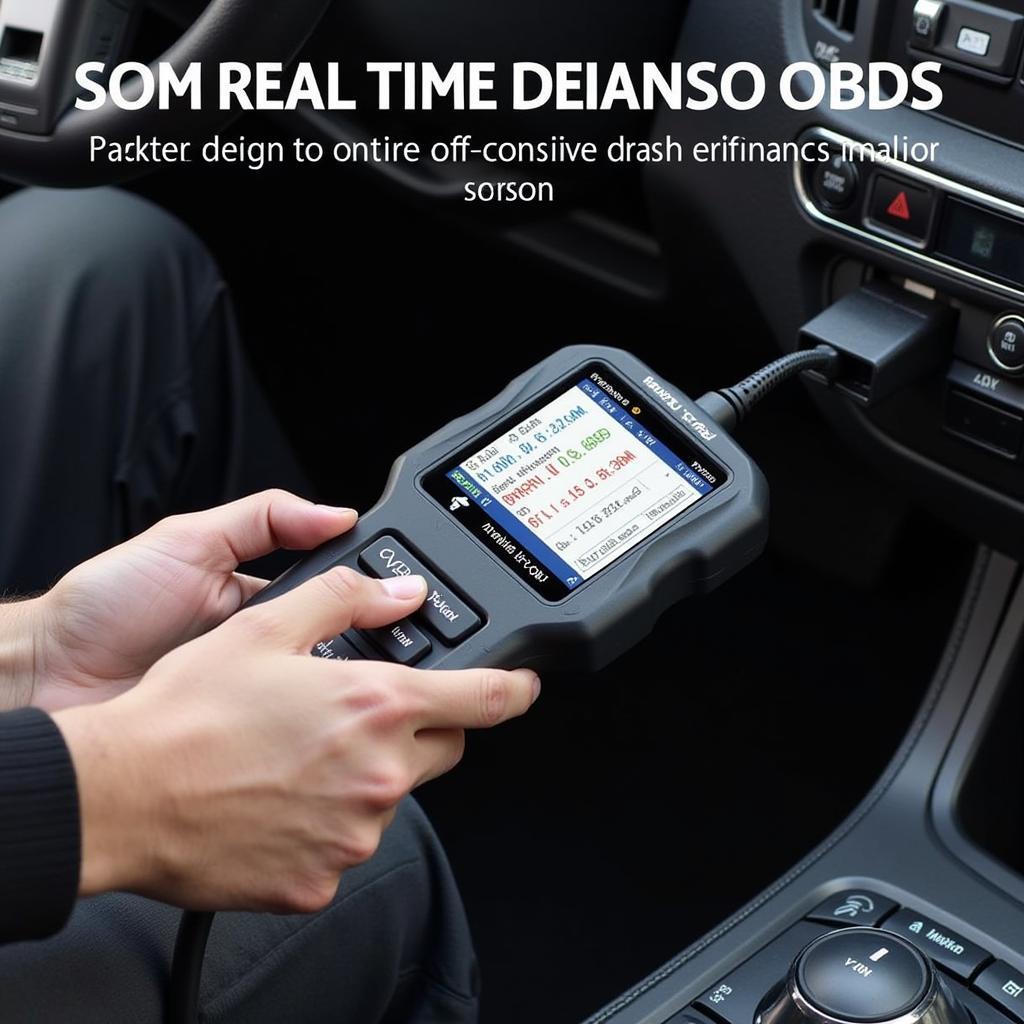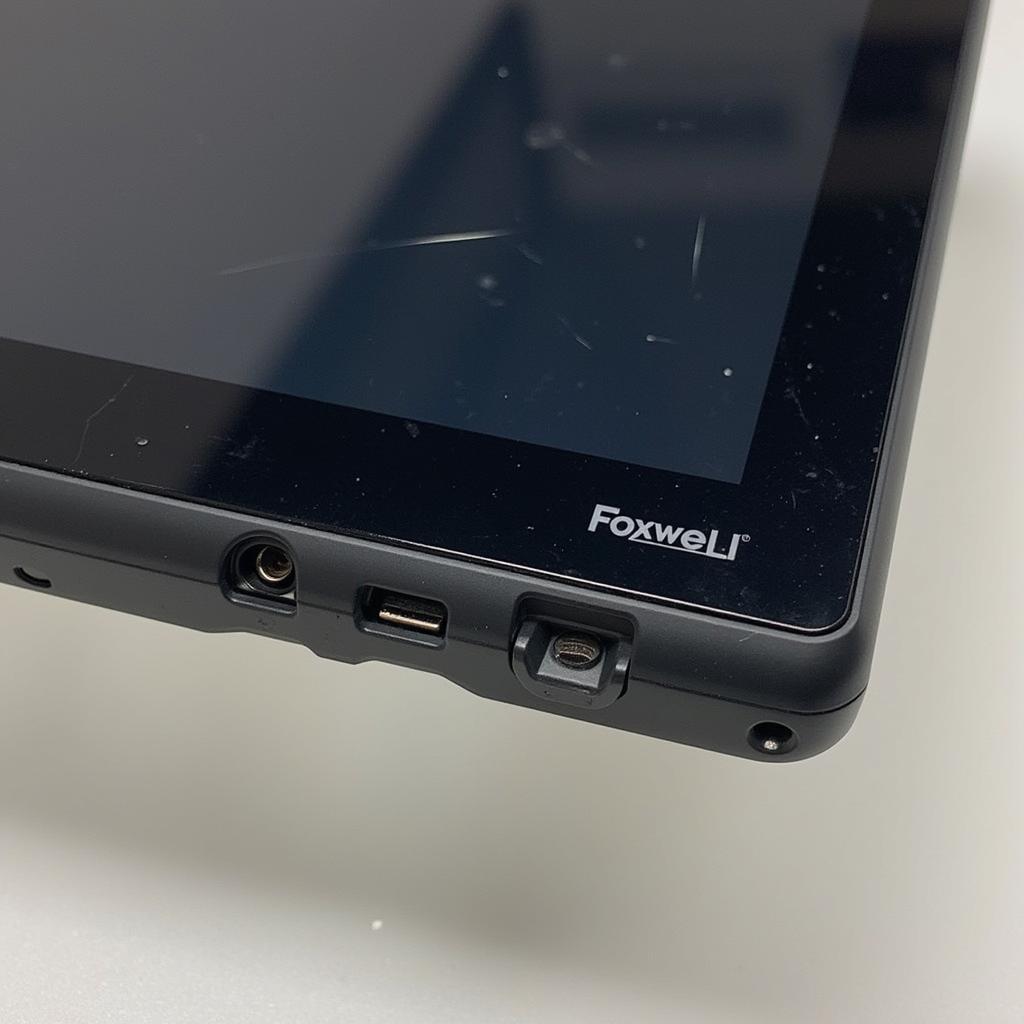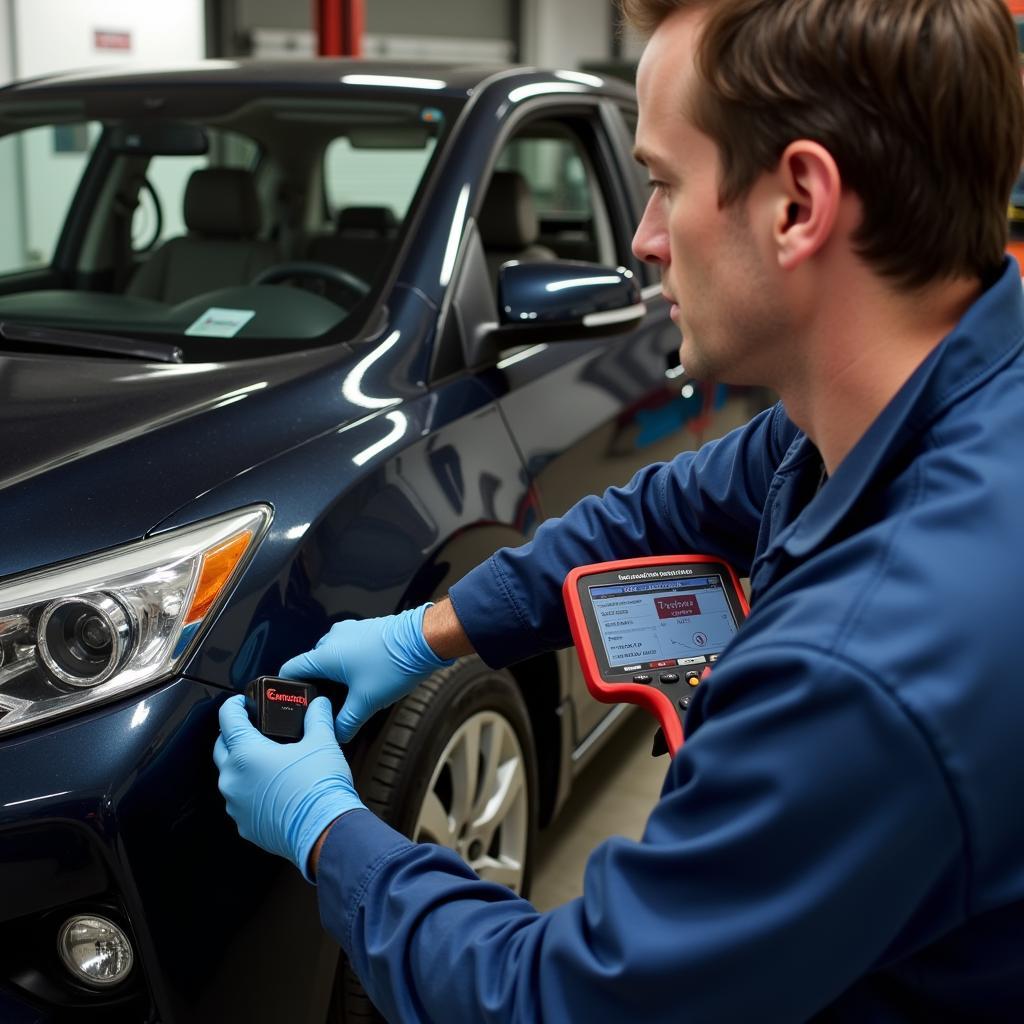Foxwell Dtc Code, or Diagnostic Trouble Code, is a crucial element in modern vehicle diagnostics. These codes, displayed on Foxwell scan tools, provide invaluable insights into the health and performance of your car’s various systems. Understanding how to interpret and address these codes can save you time, money, and frustration. Whether you’re a professional mechanic or a car enthusiast, this guide will equip you with the knowledge to effectively utilize Foxwell DTC codes.
Foxwell scan tools are becoming increasingly popular due to their affordability and comprehensive functionality. They offer a user-friendly interface and access to a wide range of vehicle makes and models. By understanding Foxwell DTC codes, you can quickly pinpoint the root cause of automotive issues, eliminating the guesswork often involved in traditional troubleshooting methods. Similar to foxwell svanner dtc, Foxwell devices provide detailed information on DTCs, empowering users to take control of their vehicle’s maintenance.
What is a Foxwell DTC Code?
A Foxwell DTC code is a five-character alphanumeric sequence that corresponds to a specific vehicle fault. These codes are generated by the vehicle’s onboard diagnostic system (OBD-II) when a malfunction is detected. The codes are then displayed on a compatible scan tool, such as a Foxwell device. Each code points towards a particular system, subsystem, or component that is experiencing an issue.
How to Read a Foxwell DTC Code
Understanding the structure of a Foxwell DTC code is the first step towards accurate diagnostics. The first character represents the system where the fault is detected (e.g., P for Powertrain, B for Body, C for Chassis, U for Network). The second character indicates whether the code is generic (0) or manufacturer-specific (1). The third character identifies the specific subsystem (e.g., 1 for Fuel and Air Metering, 2 for Fuel and Air Metering – Injector Circuit). The last two digits pinpoint the specific fault within that subsystem.
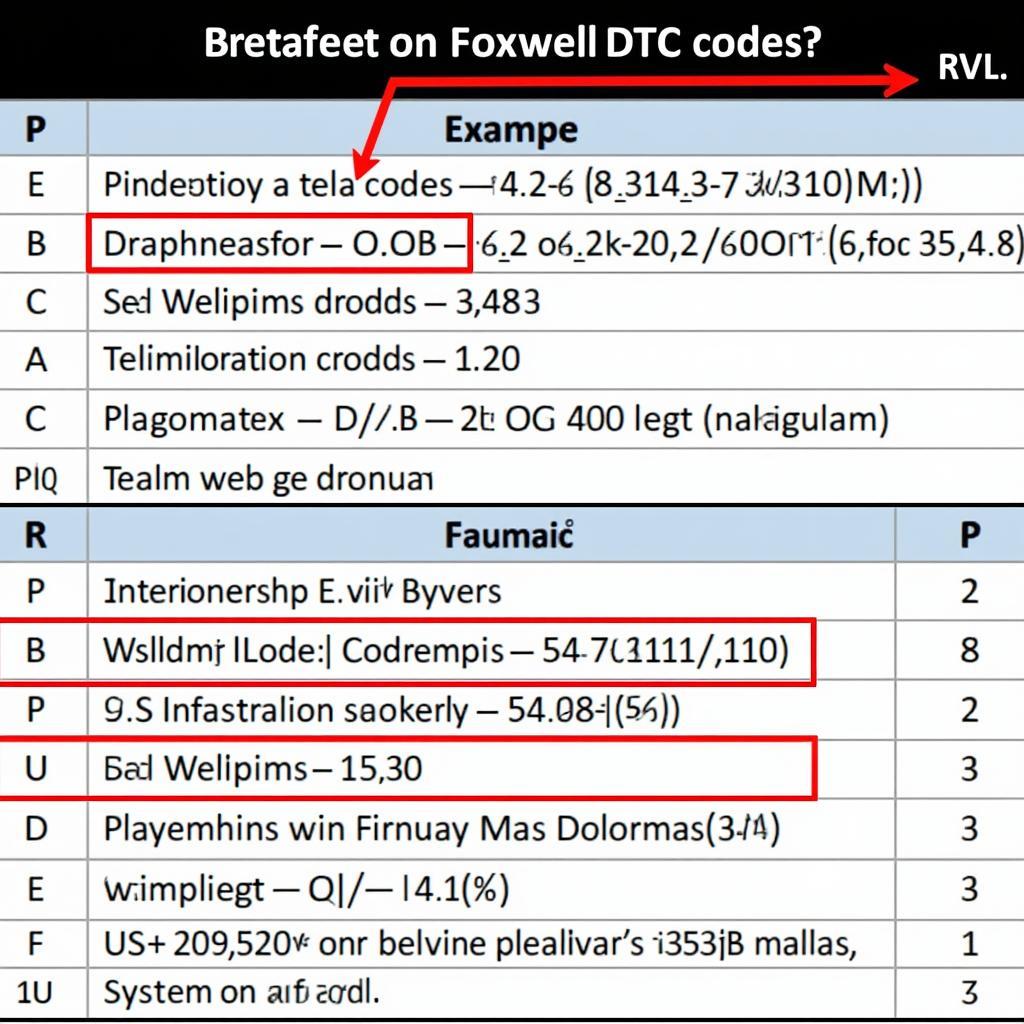 Understanding Foxwell DTC Code Structure
Understanding Foxwell DTC Code Structure
Common Foxwell DTC Codes and Their Meanings
While there are thousands of potential DTC codes, some occur more frequently than others. Familiarizing yourself with these common codes can be particularly helpful. For example, P0171 indicates a lean air/fuel mixture, while P0300 signifies a random/multiple cylinder misfire. P0420 suggests a catalyst system efficiency below threshold. Understanding these common codes can expedite the diagnostic process. This is similar to using a foxwell code reader dtc to quickly identify common car problems.
Troubleshooting Foxwell DTC Codes
Once you’ve identified a DTC code using your Foxwell scanner, the next step is to troubleshoot the issue. This process involves a systematic approach to isolate the root cause of the problem. Start by verifying the code using a different scan tool if possible. Then, consult reliable repair manuals or online databases for information specific to the identified code.
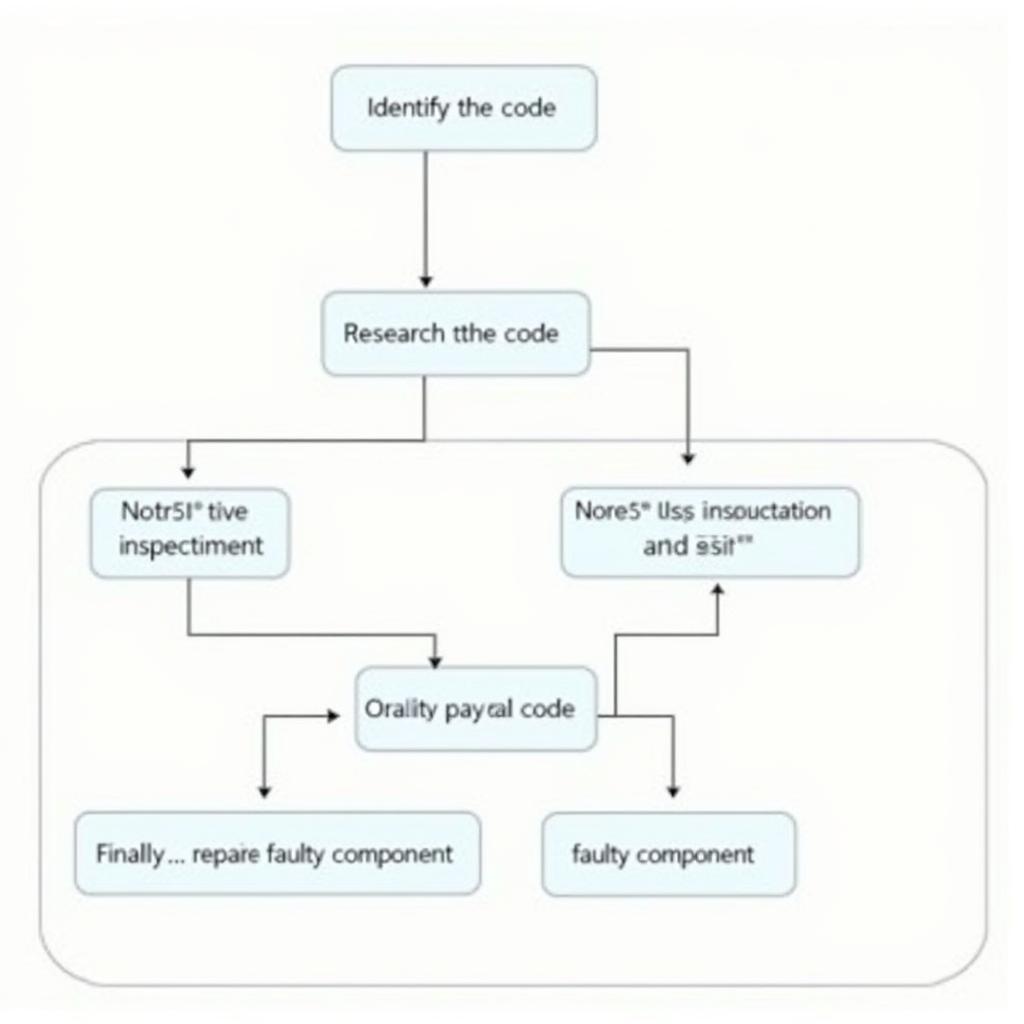 Troubleshooting Foxwell DTC Codes Step-by-Step
Troubleshooting Foxwell DTC Codes Step-by-Step
“Don’t just blindly replace parts based on the DTC code alone,” advises Alex Thompson, Senior Automotive Diagnostic Technician at Thompson Automotive. “Thorough inspection and testing are crucial to avoid unnecessary expenses.”
Using a Foxwell Scanner Effectively
To effectively utilize a Foxwell scanner for DTC code retrieval and troubleshooting, it’s crucial to understand the device’s functionality. Familiarize yourself with the various menus and options, such as reading codes, clearing codes, and viewing live data. Knowing how to navigate the software efficiently can significantly enhance your diagnostic capabilities. For instance, understanding how to use foxwell nt630 pro can greatly improve your diagnostic efficiency.
Advanced Foxwell DTC Code Analysis
For more advanced users, Foxwell scanners offer features like live data streaming and bi-directional control. Live data allows you to monitor sensor readings in real-time, while bi-directional control enables you to activate certain components for testing purposes. These advanced features can provide deeper insights into the vehicle’s operation and help pinpoint intermittent or complex issues. Comparing different diagnostic tools can also be helpful. For example, understanding the differences between inpa vs foxwell can help users choose the right tool for their needs.
Conclusion
Foxwell DTC codes are essential for efficient and accurate vehicle diagnostics. By understanding how to interpret and troubleshoot these codes, you can significantly reduce repair time and costs. Whether you’re a seasoned technician or a DIY enthusiast, mastering Foxwell DTC codes empowers you to take control of your vehicle’s maintenance. “Investing in a reliable scan tool like a Foxwell device and learning how to use it effectively is a worthwhile investment for any car owner,” says Maria Sanchez, Lead Mechanic at Sanchez Auto Repair. For further assistance and support, feel free to contact us at ScanToolUS at +1 (641) 206-8880 or visit our office at 1615 S Laramie Ave, Cicero, IL 60804, USA.

